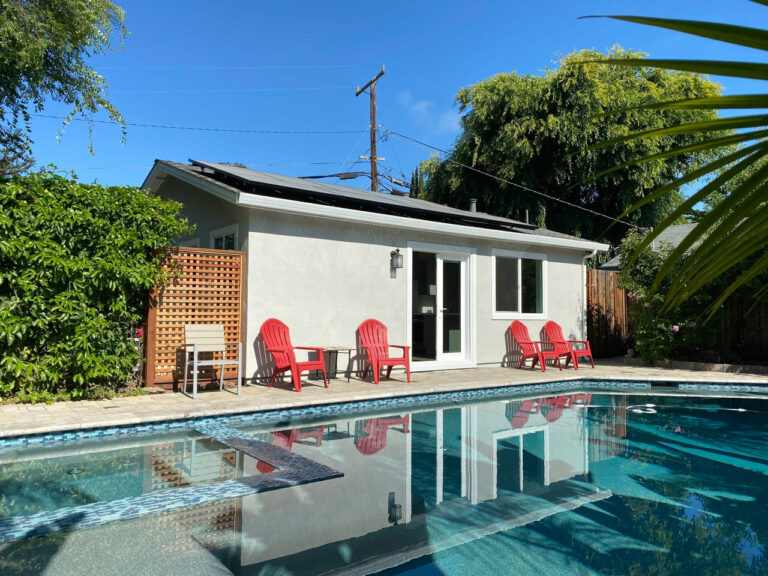These 5 Facts Might Surprise You about Building an ADU in Northern California
Building an Accessory Dwelling Unit (ADU) is a smart investment, but homeowners are often surprised by these 5 interesting facts when getting started.
Here at Acton ADU, homeowners contact us nearly every day, interested in building another home on their property. With a recent relaxation of local California regulation, accessory dwelling units or ADUs are more and more popular. Many people have a strong need to keep family close—to provide a comfortable, quiet, safe haven for friends or family to visit; or to house an aging family member who can retire comfortably and maintain their independence while living close by. Some have postgraduate students or even newlywed couples struggling to find an affordable place to live in the uncomfortably tight California housing market. And, there are many more reasons beyond that. But, regardless of the need, homeowners are still surprised to learn these few facts about the ADU planning and building process:
1. Your life is not one-size-fits-all.
Some ADUs are factory made. That’s right. They’re built off-site and put together like a kit. This one-size-fits-all approach may work for some, but the reality is California families (as well as their properties) are not one-size-fits-all. Everyone has specific needs that require customization, personalization, and creative thinking.
For example, maybe your home sits on a pie-shaped lot. Perhaps you’re an avid baker and need an abundance of counter space for all the pies you’ll be baking. Or maybe you’ll need to make sure you or a loved one is aging-in-place with the considerations of accessibility, safety, and overall quality of life. Your life is not one-size-fits-all. Neither should your ADU. Instead, your specific needs should be addressed and factored into the design of your ADU.
2. Rules and regulations in California are changing all the time.
Every town and city in California has specific rules and regulations surrounding the use and construction of ADUs in their area. Heck, rules can even change by lot and neighborhood, and you need to make sure your design and construction partner understands how to navigate their rules. Provisions change all of the time. Every regulation is subject to the interpretation of individual city planners. It’s one thing to review the rules. It’s another to interpret the rules and be able to advise you on how to maintain compliance. We run through ADU regulations in California and keep our clients compliant. Search for your city and find out which provisions are allowed for ADU design and construction in your neighborhood. Being familiar with local ordinances is a significant first step. Working with a construction partner who specializes in ADUs is also advised.
3. ADUs are not cheap gimmick projects. ADUs are homes.
Just because the Accessory Dwelling Unit is small doesn’t mean its cheap. Building in California can be expensive, and different jurisdictions require different provisions. A great way to approach your project is to really think about why you’re getting started. Are you looking to develop a housing plan for your family? Will it be an asset for you and your family for years to come? If the answer is yes, approach building an ADU like any other construction project. ADUs, after all, are homes. At least they should be for the money! Northern California property and home prices are expensive, and property is at a premium so your ADU costs will be in line with those realities. However, it certainly is an easier pill to swallow than a $1.5M home.
4. Who is going to live in your ADU?
As you plan your home, you need to consider who is going to live there. Will you provide a place for an aging parent to live comfortably? Do you have friends or family who visit often and need a quiet, private space to stay? Do you have a college graduate who needs a temporary residence? Or, do you need a quiet place to work separate from the main house? These considerations are essential when you plan your ADU. And if you’re thinking long term the answer to all of those questions should be a resounding, “Yes!”
Design your plan for more than one purpose. ADUs provide a lot of living flexibility, and literally for generations. Even if you plan to rent your space, you’ll want to consider durable materials, easy to maintain fittings and fixtures, etc. And, if you’re building a comfortable sanctuary for your mother-in-law, consider open designs that present fewer hallways and doors to navigate, as well as amenities that include easy-to-use lever hardware, wider doorways, seamless showers, accessible sinks, etc.
5. It all comes back to family.
The most common reason for homeowners to build an ADU is to provide affordable housing for family. Affordable housing for elderly parents, affordable housing for boomerang kids, and even affordable housing for ourselves—with the ability to share our main home with even more family. Throw in a dash of retirement security from potential rental income, and you’ve got yourself a pretty impressive plan to combat housing affordability for your family.
Sure, at first glance your aging parents may see things a little differently. Fear of losing their independence? Well, that’s just the thing isn’t it? By having an additional home on the property, we see lots of aging parents actually maintaining their independence, while avoiding the expense and separation of elder care facilities. As for your adult kids? It’s the same. Independence and family connectivity become cornerstones in a punishing housing shortage.
Either way, your family is unique. Just like every ADU is unique. And the first step is to think about how an ADU might really help you out.
If you’re looking to get started on an ADU in Northern California, our first piece of advice is simple: Don’t be surprised. Do a little reading and educate yourself. Oh, and think long term.
Or if you want to jump-start the process, we’re happy to help guide the conversation.





